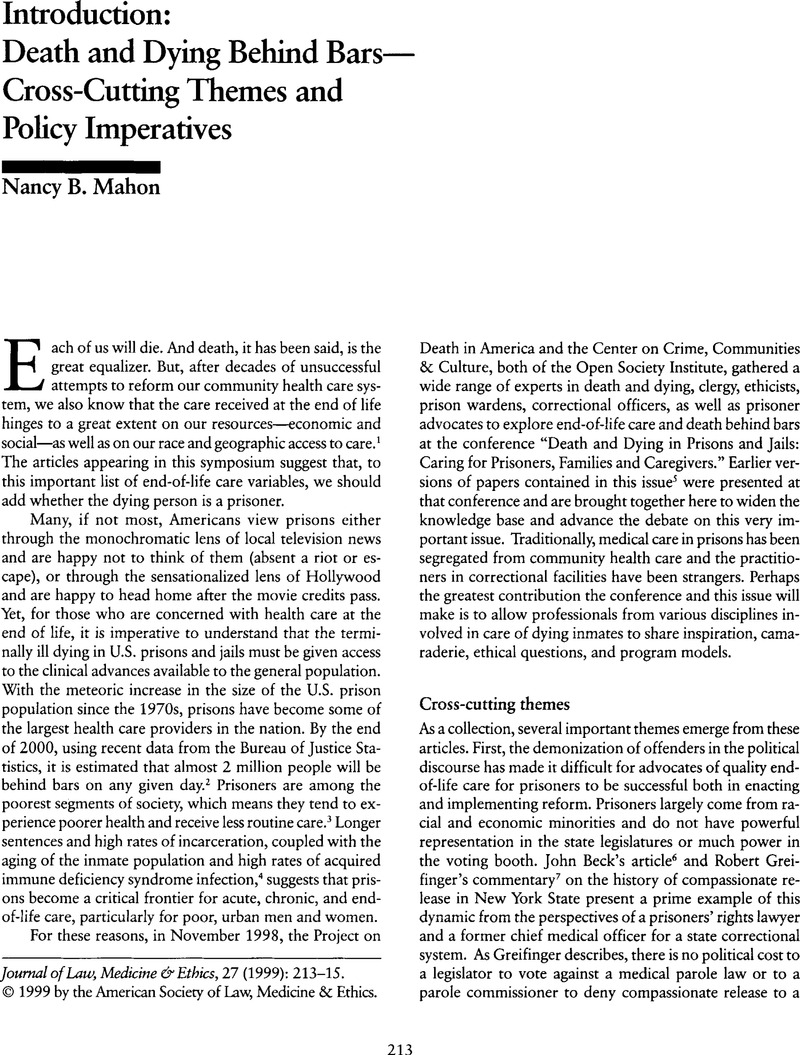Crossref Citations
This article has been cited by the following publications. This list is generated based on data provided by Crossref.
Dawes, John
2002.
Dying with Dignity: Prisoners and Terminal Illness.
Illness, Crisis & Loss,
Vol. 10,
Issue. 3,
p.
188.
2002.
Bibliography.
Journal of Correctional Health Care,
Vol. 9,
Issue. 2,
p.
181.
Mezey, Mathy
Dubler, Nancy Neveloff
Mitty, Ethel
and
Brody, Abraham Aizer
2002.
What Impact Do Setting and Transitions Have on the Quality of Life at the End of Life and the Quality of the Dying Process?.
The Gerontologist,
Vol. 42,
Issue. suppl_3,
p.
54.
Steiner, Eva
2003.
Early Release for Seriously Ill and Elderly Prisoners: Should French Practice be Followed?.
Probation Journal,
Vol. 50,
Issue. 3,
p.
267.
Yampolskaya, Svetlana
and
Winston, Norma
2003.
Hospice care in prison: General principles and outcomes.
American Journal of Hospice and Palliative Medicine®,
Vol. 20,
Issue. 4,
p.
290.
Ratcliff, Margaret
and
Craig, Elizabeth
2004.
The GRACE Project: Guiding End-of-Life Care in Corrections 1998–2001.
Journal of Palliative Medicine,
Vol. 7,
Issue. 2,
p.
373.
Levine, Susan Franzel
2005.
Improving End-of-life Care of Prisoners.
Journal of Correctional Health Care,
Vol. 11,
Issue. 4,
p.
317.
Handtke, Violet
Bretschneider, Wiebke
Elger, Bernice
and
Wangmo, Tenzin
2017.
The collision of care and punishment: Ageing prisoners’ view on compassionate release.
Punishment & Society,
Vol. 19,
Issue. 1,
p.
5.
Öztürk, Ahmet Erdi
and
Gözaydın, İştar
2020.
Religion and Prison: An Overview of Contemporary Europe.
p.
391.
Kaushik, Shivani
and
Currin-McCulloch, Jen
2023.
Dying for a change: a systematic review of compassionate release policies.
International Journal of Prisoner Health,
Vol. 19,
Issue. 1,
p.
47.



